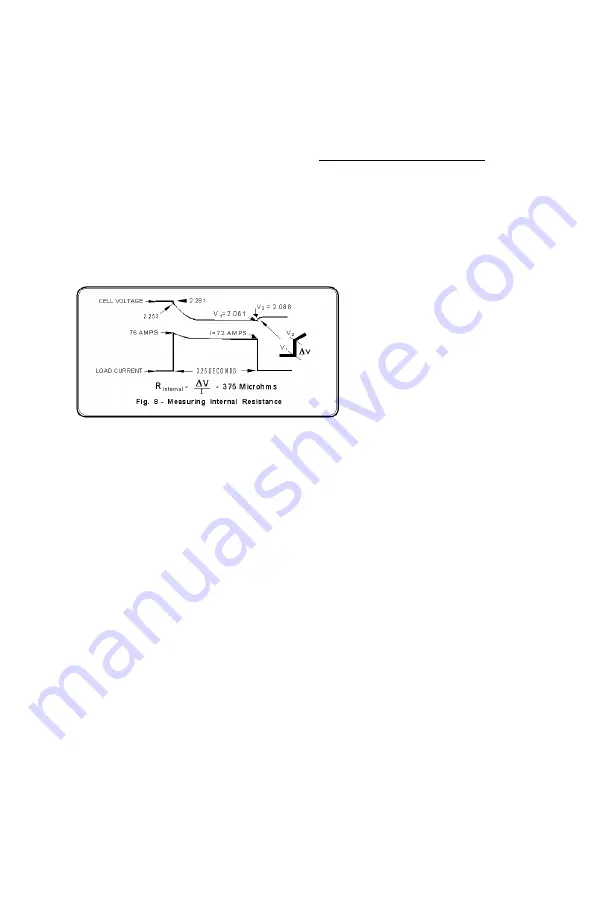
Application Note CC-001
81
The battery manufacturers have customarily determined the internal
resistance of cells using simple Ohms Law. They usually measure the
voltage differences and current during a battery discharge.
The Cellcorder does the same thing, but very quickly and accurately.
Figure 8 reveals what happens when a battery is subjected to a load. The
instantaneous voltage drop when the load is applied, or the instantaneous
voltage recovery when the load is removed, is due to the internal
resistance. The Cellcorder reads the current and the cell voltage just prior
to removal of the load and then measures the recovered cell's voltage.
The resultant resistance is simply R
INTERNAL
=
V/I.
9
THE MOMENTARY TEST DISCHARGE
This is a feature worth your time to understand. It is, in part, what
distinguishes the Cellcorder from most instruments presently on the
market and will help provide readings in which you can be confident.
For rated cell capacities of less than 1000 amp-hours, the discharge is
short, only three to four seconds, in the order of 20 to 75 amps. For larger
capacities, the duration is close to 10 seconds.
To prove a point about safety and the effects of
short- term
high currents,
we performed the following experiment. We imagined an internal
conductor corroded down to the size of a dot.
We found that passing the Cellcorder’s test current through a skinny
wire (27 inches of #20 gauge wire) caused no damage nor barely heated
it. Try it!
The reason is that very little energy is involved. It amounts to
only a maximum of 5 watts per
1000 micro
hms and
lasts only seconds
.
In an actual test, within milliseconds of starting, the Cellcorder senses
the current level. If there is a very high internal resistance, the current
will be low and the discharge will be instantaneously terminated.
Thus,
a cell with an exceptionally corroded internal conductor will not be
further damaged.
















































